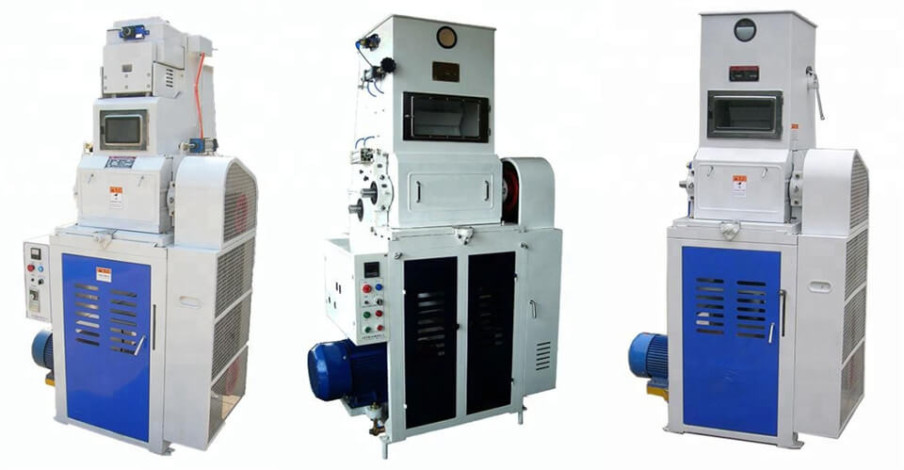
Photo: Collected
The main working members of the rice huller are a pair of parallel rotating rice hullers with a certain speed difference. The distance between two hulling rollers is the husking working area during rubber hulling. When the rolling distance is less than the grain size, the grain falls into the peeling area, and when it contacts the two rolls, the extrusion force is exerted on both sides of the thickness direction. At this time, the grain is a large friction coefficient of the elastic layer to grasp "fast" (rolled), down the movement. Because there is a certain speed difference between the two rollers and the slow roller, the two sides of the grain are subjected to a pair of reverse friction forces. When the extrusion pressure and friction force cooperate to form the rubbing and tearing effect, the two sides of the grain will be torn in the opposite direction of the husk.
The necessary conditions for rice husking are:
1. The grain can fall into the roller with the correct attitude and speed. Grain flow between rollers may be longitudinal (axial) or transverse. The inner and outer glume edges of the grain are rolled up into a hook shape and hook each other to enclose the caryopsis (brown rice) in it. This axial hook line is located on both sides of the grain. According to the physical structure characteristics of the grain, the binding force at the top of the hook line of the inner and outer glume shells is relatively weak. Longitudinally, the roller squeezes, rubs and RIPS in this hook direction, making the husk easy to break; Such as transverse or oblique roller is more difficult to peel; And the grain is required to be a single layer, without overlapping into the roller. It is also important to maintain the consistency and uniformity of rice flow in order to ensure the smooth wear of the rice huller roller and prevent pitting. Rice hulling production can be improved by increasing the speed at which the rice enters the rolling distance. The friction caused by the accelerated rice hulling roller at the beginning is reduced and the life of the husker is prolonged. Theoretically, the best speed for husking is as fast as or as fast as the rolling speed. At present, the rubber husker is rectified, accelerated and guided by a sliding board, so it is impossible to achieve such a high roller speed. However, it can still be improved properly if proper technical measures are taken [2].
2. There must be proper high pressure between two rollers. A proper pressure must be maintained between the two rollers so that the husk binding force generated by the roller is strong enough to overcome the husk binding force so that the husk is torn and husked. However, the squeezing, rubbing and tearing force should not be too large. If it exceeds the pressure resistance and shear breaking resistance of the rice grains, the rice will be damaged, resulting in increased rough breaking (the mass of the rough mix of husked rice takes up the percentage of the mass of the husked grains, including the whole brown rice and broken rice), increased cracked grains, and the lighter brown rice will be frizzled.
3. Two rollers must have a certain line speed difference such as two rollers of the same line speed, that is, V difference =0, the two sides of the grain only extrusion pressure without an upward, always under the opposite direction of friction force, of course, there will be no rubbing tear effect, also can not reach the purpose of peeling. The linear speed difference is the prerequisite for the rubbing and tearing effect. The linear speed difference can produce the rubbing and tearing effect on the "rolled" grains. The larger the linear speed difference is, the stronger the rubbing and tearing force are, and the higher the peeling rate is when the pressure and flow between the rollers are the same. However, the difference in wire speed should not be too large. Otherwise, a large number of rough and cracked grains will be generated. As a result, the husking roller will be slotted, and the rubber and rice husking energy consumption will increase. However, it must not be too small. If it is too small, in order to maintain the hulling rate, the husking condition will deteriorate due to increased inter-roll pressure.
S0urce:
Online/GFMM
Comment Now